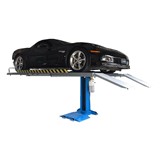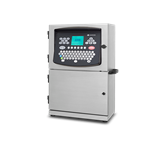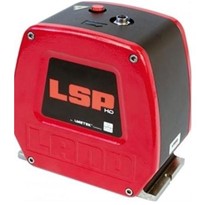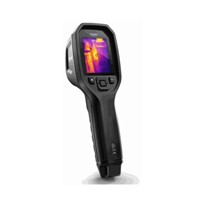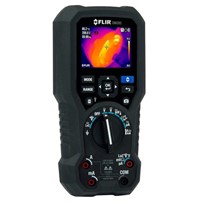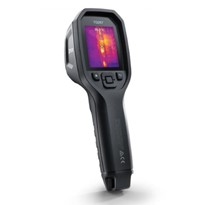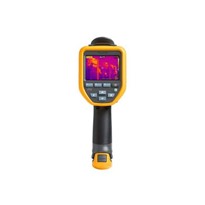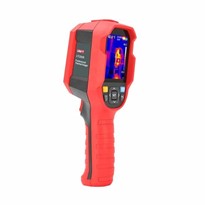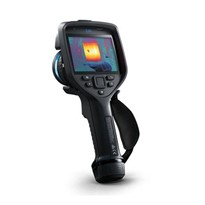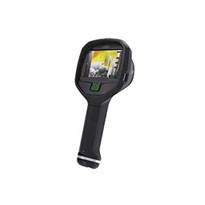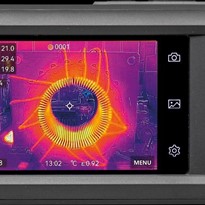The ability to measure temperature optically allows for fast, accurate measurements on moving or hazardous materials. Infrared energy pyrometers focus on a target area to produce a temperature reading emanating from that single point. Measurements signals are then fed back into control systems. Single point infrared pyrometers are generally used for continuous control systems where non-contact temperature measurement is best or sometimes the only way.
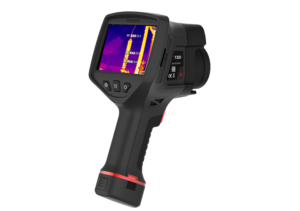 Similar in technology, infrared thermal imaging has become ubiquitous in industry as a portable device used primarily for preventative maintenance. Ideal for performing regular checks on critical points in the plant, the colourful images show the relative differences in temperature allowing the identification of problems through visual means. Actual temperature readings within the image can be determined as the image is literally an array of values (Celsius or Fahrenheit) converted to a colour for visualisation.
Similar in technology, infrared thermal imaging has become ubiquitous in industry as a portable device used primarily for preventative maintenance. Ideal for performing regular checks on critical points in the plant, the colourful images show the relative differences in temperature allowing the identification of problems through visual means. Actual temperature readings within the image can be determined as the image is literally an array of values (Celsius or Fahrenheit) converted to a colour for visualisation.
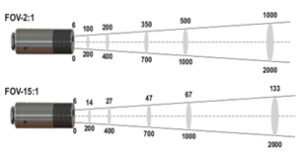 Infrared Pyrometers that measure energy from a single point have an optical specification called “Distance to Spot” ratio expressed on data sheets as D:S and specify the size of the measurement area at the focal length of the lens. For example, a 10mm diameter measurement area at 1000mm with a 200:1 D:S. This means we are measuring the average infrared energy emitted from the target – which is a 10mm circle from a distance of 1000mm. If the target being measured doesn’t move in relation to the infrared pyrometer, then the measurement is being made continuously and accurately. The target of the pyrometer is generally selected very deliberately as, at this specific point, the temperature conditions are most important. There are however applications where single point infrared pyrometers are challenged by the target moving in relation to the fixed pyrometer or simply not knowing where the device should be aimed due to the random nature of the application.
Infrared Pyrometers that measure energy from a single point have an optical specification called “Distance to Spot” ratio expressed on data sheets as D:S and specify the size of the measurement area at the focal length of the lens. For example, a 10mm diameter measurement area at 1000mm with a 200:1 D:S. This means we are measuring the average infrared energy emitted from the target – which is a 10mm circle from a distance of 1000mm. If the target being measured doesn’t move in relation to the infrared pyrometer, then the measurement is being made continuously and accurately. The target of the pyrometer is generally selected very deliberately as, at this specific point, the temperature conditions are most important. There are however applications where single point infrared pyrometers are challenged by the target moving in relation to the fixed pyrometer or simply not knowing where the device should be aimed due to the random nature of the application.
Enter process thermal imaging…
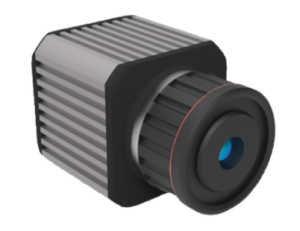 Thermal imaging units provide a view of a larger area but represent temperatures as a colour but also a data point. Process thermal imagers are very similar to portable thermal imaging units but differ in form factor, optical performance and do not have inbuilt image display instead relying on communications with remote PC software for display. Different lens options enable different views from a fixed point giving flexibility in installation ensuring good target coverage. Thermal imaging units are generally used as a monitoring device, rather than be used as a control device in a temperature regulation application. Capable of measuring thousands of different points in a single view, irregularities such as hot spots or cold spots that form unpredictably and/or randomly can be identified.
Thermal imaging units provide a view of a larger area but represent temperatures as a colour but also a data point. Process thermal imagers are very similar to portable thermal imaging units but differ in form factor, optical performance and do not have inbuilt image display instead relying on communications with remote PC software for display. Different lens options enable different views from a fixed point giving flexibility in installation ensuring good target coverage. Thermal imaging units are generally used as a monitoring device, rather than be used as a control device in a temperature regulation application. Capable of measuring thousands of different points in a single view, irregularities such as hot spots or cold spots that form unpredictably and/or randomly can be identified.
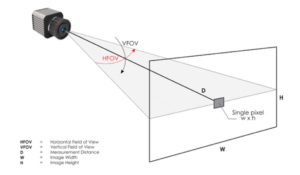
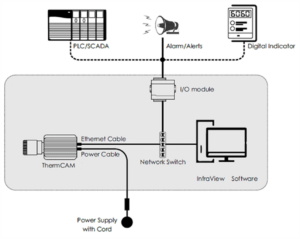
Requiring an external computer to run visualisation software and cabling between, process thermal imagers are inherently more complex and frequently more expensive than single point pyrometers, but the costs of this technology has generally reduced substantially from average pricing say a decade ago. This has enabled a new generation of temperature solutions.
By measuring all points within a view area, a process thermal imaging system can recognise the highest temperature regardless of where that point is within the view area. This is a point of difference with single point pyrometers which must be aimed precisely to measure and transmit that temperature – assuming one knows where that point is.
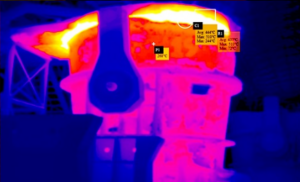
Process thermal imaging is far superior to single point infrared when faced with the challenge of random targets or irregular temperatures across a larger area.
Pyrosales offer a wide range of Thermal Imaging Cameras and Infrared Pyrometers we can create the best solution for your temperature process needs.


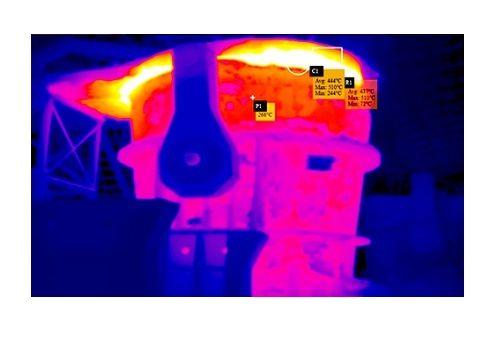
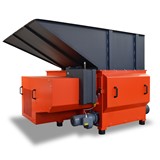
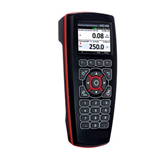

-160x160-state_article-rel-cat.png)


